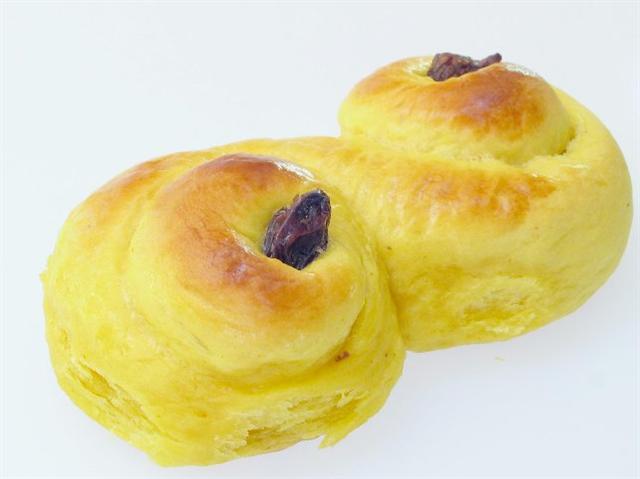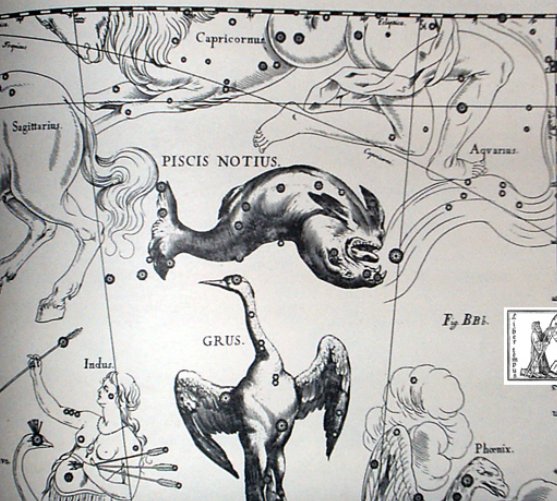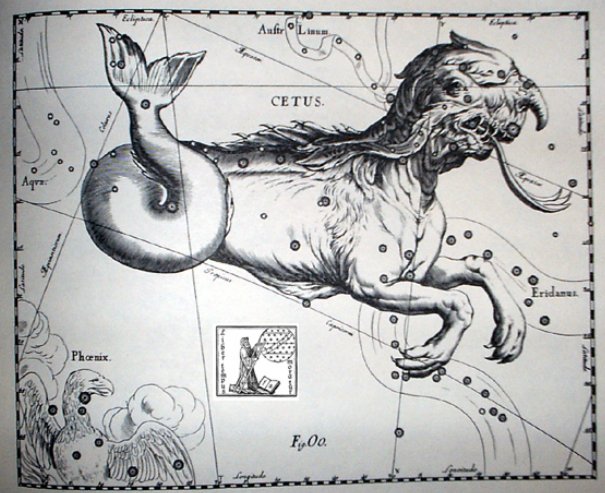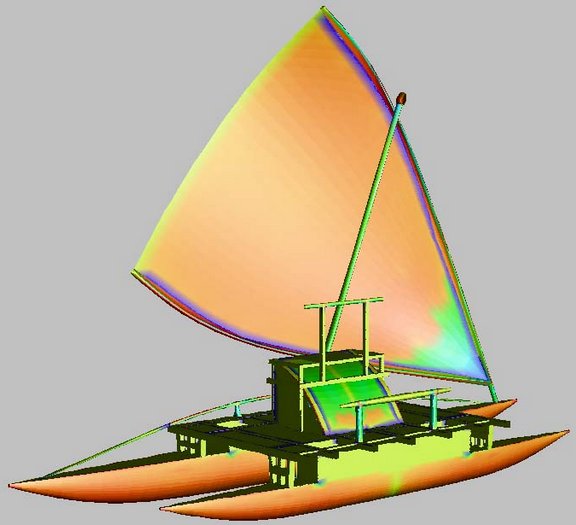495. Metoro mentioned tagata rogo
also when reading side b:
| E vae ra - ka oho - ki te henua - kua huki |
ku kikiu - te henua |
18 |
 |
 |
| Cb3-1 (50) |
Cb3-2 |
| June 5 (522)
5h (76.1)
ε Leporis (76.0), CURSA = β Eridani (76.4), λ Eridani (76.7)
*35.0 = *76.4 - *41.4 |
6 (157 = 314 / 2)
μ Aurigae, μ Leporis (77.6) |
| Dec 5
Mula-19 (The Root)
SABIK (The Preceding One) = η Ophiuchi (259.7), η Scorpii (259.9) |
6 (340)
NODUS I = ζ Draconis (260.0), π Herculis (260.7), RAS ALGETHI = α Herculis (260.8) |
... Sacred product of the people's agriculture, the installation kava is brought forth in Lau by a representative of the native owners (mataqali Taqalevu), who proceeds to separate the main root in no ordinary way but by the violent thrusts of a sharp implement (probably, in the old time, a spear). Thus killed, the root (child of the land) is then passed to young men (warriors) of royal descent who, under the direction of a priest of the land, prepare and serve the ruler's cup ...
|
| manu rere i te taketake |
te henua - mau i te taketake |
manu rere |
kiore - henua |
92 |
|
... The specific epithet taketake is Māori for long established, ancient, or original ... |
 |
 |
 |
 |
| Cb3-21 (70 = 47 + 23) |
Cb3-22 |
Cb4-1 (464 = 392 + 72) |
Cb4-2 (73 = 50 + 23) |
| June 25
no star listed (96) |
26 (177)
β Monocerotis, ν Gemini (97.0) |
27
no star listed (98) |
28
ν Puppis (99.2), ψ3 Aurigae (99.4), ψ2 Aurigae (99.5)
*58.0 = *99.4 - *41.4
GEMMA (α Cor. Bor.) |
| Solstice (355 - 183 = 172) |
║June 22 (115 + 58) |
23 |
24 (175 = 84 + 91) |
|
... In other
words, the
ancient Druidic
religion based
on the oak-cult
will be swept
away by
Christianity and
the door - the
god Llyr - will
languish
forgotten in the
Castle of
Arianrhod, the
Corona
Borealis.
This helps us to
understand the
relationship at
Rome of Janus
and the White
Goddess Cardea
who is ... the
Goddess of
Hinges who came
to Rome from
Alba Longa. She
was the hinge on
which the year
swung - the
ancient Latin,
not the Etruscan
year - and her
importance as
such is recorded
in the Latin
adjective
cardinalis -
as we say in
English 'of
cardinal
importance -
which was also
applied to the
four main winds;
for winds were
considered as
under the sole
direction of the
Great Goddess
until Classical
times ... |
| Dec 25
KAUS BOREALIS = λ Sagittarii (279.3) |
26 (360)
ν Pavonis (280.4), κ Cor. Austr. (280.9)
*239.0 = *280.4 - *41.4 |
27
Abhijit-22 (Victorious)
θ Cor. Austr. (281.0), VEGA = α Lyrae (281.8) |
28
no star listed (282) |
| Solstice (332 + 23 = 355) |
║Dec 22 |
23 |
24 |
|
hokohuki |
tagata
ka pau |
tagata
rima oho ki te kihikihi |
ki te
ragi |
koia
ra kua mau - i te ahi |
e tagata rogo |
|
Ka.
Particle of the
affirmative imperative,
of cardinal numerals, of
independent ordinal
numerals, and of
emphatic exclamation,
e.g. ka-maitaki!
how nice! Vanaga. Kß.
1. To light a fire in
order to cook in the
earth oven (see umu):
he-kß i te umu, he-kß i
te kai. 2.
Figuratively: to fire up
the soul. To put oneself
in a fury (with
manava): ku-kß-ß toona
manava he has become
furious. Vanaga. 1. Of
T. 2. Imperative sign;
ka oho, ka
tere, ka ea,
begone!; ka ko iha,
a greeting T; ka mou,
hush; ka oho,
goodbye. 3. Infinitive
sign; mea meitaki ka
rava, a thing good
to take; ka harai kia
mea, to accompany.
4. A prefix which forms
ordinals from cardinals.
5. The dawning of the
day. 6. Different (?
ke). Churchill.
Pau.
1. To run
out (food, water):
ekˇ pau te kai, te vai,
is said when there
is an abundance of food
or water, and there is
no fear of running out.
Puna pau, a small
natural well near the
quarry where the 'hats'
(pukao) were
made; it was so called
because only a little
water could be drawn
from it every day and it
ran dry very soon. 2.
Va'e pau, clubfoot.
Paupau: Curved.
Vanaga. 1. Hakapau,
to pierce (cf.
takapau, to thrust
into). Pau.: pau,
a cut, a wound, bruised,
black and blue. 2.
Resin. Mq.: epau,
resin. Ta.: tepau,
gum, pitch, resin.
(Paupau) Hakapaupau,
grimace, ironry, to
grin. 3. Paura
(powder), gunpowder. 4.
Pau.: paupau,
breathless. Ta.:
paupau, id. 5. Ta.:
pau, consumed,
expended. Sa.: pau,
to come to an end. Ma.:
pau, finished. 6.
Ta.: pau, to wet
one another. Mq.: pau,
to moisten. Churchill.
Paua
or
pāua
is the Māori name
given to three species
of large edible sea
snails, marine gastropod
molluscs which belong to
the family Haliotidae
(genus Haliotis),
known in the USA as
abalone, and in the UK
as ormer shells ...
Wikipedia |
 |
 |
 |
 |
 |
 |
|
Cb7-22 |
Cb7-23 |
Cb7-24 (168) |
Cb7-25 |
Cb7-26 (392 + 170) |
Cb7-27 (9 * 19) |
|
CLOSE TO THE FULL MOON: |
|
Sept 29
ι Crucis (192.2), β
Muscae (192.5),
MIMOSA = β Crucis
(192.9) |
30 (273)
no star listed (193) |
Oct 1
κ
Crucis (194.4),
ψ
Virginis (194.5),
μ
Crucis,
λ
Crucis (194.6),
ALIOTH
(Fat Tail) =
ε
Ursae Majoris,
ι
Oct.
(194.8)
*153.0 = *194.4 - *41.4 |
2
MINELAUVA =
δ
Virginis
(195.1),
COR CAROLI =
α
Canum Ven.
(195.3) |
3
δ
Muscae (196.5) ,
VINDEMIATRIX (Grape
Gatherer) =
ε
Virginis
(196.8) |
4
13h (197.8)
ξ╣ Centauri (197.1), ξ▓
Centauri (197.9) |
|
║Sept 25 |
26 |
27 (270) |
28 |
29 |
30 |
|
'Sept 2 |
3 |
4 |
5 (275 - 27 = 248) |
6 |
7 (250) |
|
"Aug 19 |
20 |
21 |
22 (275 - 41 = 234) |
23 |
24 |
|
JULY 27 |
28 |
29 |
30 (275 - 64 = 211) |
31 |
AUG 1 |
|
CLOSE TO THE SUN: |
|
March 30
ξ
Phoenicis (9.0),
ρ
Tucanae (9.1),
DENEB KAITOS (Tail of
the Sea Beast) =
β
Ceti,
η
Phoenicis (9.4),
AL NITHĀM (String of
Pearls) =
φ╣
Ceti
(9.6)
*334.0 = *375.4 - *41.4 |
31 (90)
ACHIRD (Woman with
Luminous Rays) =
η
Cassiopeiae
(10.7) |
April 1
Legs-15 (Wolf)
ν
Andromedae (11.0),
φ▓
Ceti (11.1),
ρ
Phoenicis (11.2),
η Andromedae
(11.4)
*336.0 = *377.4 - *41.4 |
2
CIH (Whip) = γ
Cassiopeiae, λ Tucanae (12.4), φ│ Ceti (12.6), μ Andromedae (12.8)
*12.4 + *366 -*41.4 =
*337 |
3
φ4 Ceti (13.2) |
4
no star listed (14) |
|
║March 26 |
27 |
28 |
29 (88) |
30 |
31 |
|
'March 3 |
4 |
5 (91 - 27 = 64) |
6 |
7 |
8 |
|
"Febr 17 |
18 |
19 (91 - 41 = 50) |
20 |
21 |
22 |
|
JAN 25 |
26 |
27 (= 91 - 64) |
28 |
29 |
30 |
When in early October Mimosa was
close to the Full Moon it meant a week had gone by
after the day of spring equinox (in September 22).
North of the equator, on the other hand, summer was
here in the past, and the Rogo figure in
Cb7-24 was evidently designed with an open hand in front to
illustrate this fact.
... The practice of turning down the
fingers, contrary to our practice, deserves notice,
as perhaps explaining why sometimes savages are
reported to be unable to count above four. The
European holds up one finger, which he counts, the
native counts those that are down and says 'four'.
Two fingers held up, the native counting those that
are down, calls 'three'; and so on until the white
man, holding up five fingers, gives the native none
turned down to count. The native is nunplussed, and
the enquirer reports that savages can not count
above four ...
Also the tagata rogo figure in
Cb7-27 has an empty hand, thereby presumably
stating that he belongs together with Rogo in
Cb7-24. The fire (ka) had gone out (pau)
and only the ashes (te kihikihi) remained.
Here Metoro seems to have talked about the situation
north of the equator and the creator of the C text
could,
indeed, in Cb7-26 have illustrated how the Sun
now was moving down to the southern hemisphere. At
the horizon in the west not only the Full Moon but
also the folly grown Sun lost power and were
sagging:

 |
 |
 |
 |
|
Aa1-28 |
Aa1-29 |
Aa1-30 |
Aa1-31 |
|
ka puhi
hoki ki te ahi |
ma te
hokohuki |
ki te ahi |
e uhi
tapamea |
 |
 |
 |
 |
 |
|
Aa1-32 |
Aa1-33 |
Aa1-34 |
Aa1-35 |
Aa1-36 |
|
ka puhi
hoki ki te ahi |
ma te toga
tu |
te tapamea |
e tagata
hakaganagana |
e uhi
tapamea |
Then follows glyph number 172 (→
June solstice) with a pair of beautifully rounded 'great
fires' - like the figure 8 (or infinity;
∞):

|
Hetu
erua |
tagata
rere ki te ragi |
|
Hetu
1. To (make)
sound; figuratively:
famous, renowned. 2. To crumble into embers (of a
bonfire). Hetu'u.
Star, planet;
hetu'u popohaga
morning star; hetu'u ahiahi evening star; hetu'u viri
meteorite. Vanaga.
Hetu 1. Star (heetuu);
hetu rere,
meteor; hetu pupura,
planet. P Pau.: hetu,
star. Mgv.: etu,
id. Mq.: fetu,
hetu, id. Ta.:
fetu, fetia,
id. The alternative form
fetia in Tahiti,
now the only one in
common use, need not be
regarded as an anomaly
in mutation. It seems to
derive from Paumotu
fetika, a planet.
Its introduction into
Tahiti is due to the
fashion of accepting
Paumotu vocables which
arose when the house of
Pomare came into
power. 2. Capital letter
(? he tu). 3. To
amuse. 4. To stamp the
feet. Hetuhetu,
to calk, to strike the
water. Hetuke,
sea urchin. Churchill. |
 |
 |
 |
|
Cb8-1 (172) |
Cb8-2 (565 = 392 + 173) |
Cb8-3 |
|
... The manner of his
death can be
reconstructed from a
variety of legends,
folk-customs and other
religious survivals. At
mid-summer, at the end
of a half-year reign,
Hercules is made drunk
with mead and led into
the middle of a circle
of twelve stones
arranged around an oak,
in front of which stands
an altar-stone; the oak
has been lopped until it
is T-shaped. He is bound
to it with willow thongs
in the 'five-fold bond'
which joins wrists,
neck, and ankles
together, beaten by his
comrades till he faints,
then flayed, blinded,
castrated, impaled with
a mistletoe stake, and
finally hacked into
joints on the
altar-stone. His blood
is caught in a basin and
used for sprinkling the
whole tribe to make them
vigorous and fruitful.
The joints are roasted
at twin fires of
oak-loppings, kindled
with sacred fire
preserved from a
lightning-blasted oak or
made by twirling an
alder- or cornel-wood
fire-drill in an oak
log. The trunk is then
uprooted and split into
faggots which are added
to the flames. The
twelve merry-men rush in
a wild figure-of-eight
dance around the fires,
singing ecstatically and
tearing at the flesh
with their teeth. The
bloody remains are burnt
in the fire, all except
the genitals and the
head. These are put into
an alder-wood boat and
floated down the river
to an islet; though the
head is sometimes cured
with smoke and preserved
for oracular use. His
tanist succeeds him and
reigns for the remainder
of the year, when he is
sacrificially killed by
a new Hercules
... |
|
CLOSE TO THE FULL MOON: |
|
Oct 5
APAMI-ATSA (Child of
Waters) =
θ
Virginis,
ψ
Hydrae (198.5),
DIADEM =
α
Com. Ber.
(198.9) |
6 (96 + 183)
AL DAFĪRAH (Tuft) = β
Com. Ber.
(199.4)
*158.0 = *199.4 - *41.4 |
7 (280)
σ Virginis (200.4)
*159.0 = *200.4 - *41.4 |
|
║Oct 1 |
2 (275) |
3 |
|
'Sept 8 |
9 (279 - 27 = 252) |
10 |
|
"Aug 25 (237) |
26 |
27 |
|
AUG 2 (214) |
3 |
4 |
|
CLOSE TO THE SUN: |
|
April 5
1h (15.2)
β
Phoenicis (15.1),
υ
Phoenicis,
ι
Tucanae (15.6),
η
Ceti,
ζ
Phoenicis (15.7) |
6 (96)
Al Batn Al Hūt-26 (Belly
of the Fish) /
Revati-28 (Prosperous) /
1-iku (Field Measure)
MIRACH (Girdle) =
β
Andromedae, KEUN MAN MUN
(Camp's South Gate) =
φ
Andromedae
(16.0),
ANUNITUM =
τ
Piscium
(16.5),
REVATI (Abundant) =
ζ
Piscium
(16.9)
REGULUS
(α Leonis) |
7
ν Phoenicis (17.4), κ
Tucanae (17.6)
*341.0
= 421 - 80 = *382.4 -
*41.4 |
|
... Though Andromeda has
its roots most firmly in
the Greek tradition, a
female figure in
Andromeda's place
appeared in Babylonian
astronomy. The stars
that make up Pisces and
the middle portion of
modern Andromeda formed
a constellation
representing a fertility
goddess, sometimes named
as Anunitum or
the Lady of the Heavens
... |
|
║April 1 |
2 (92 = 275 - 183) |
3 |
|
'March 9 |
10 |
11 (70) |
|
"Febr 23 (Terminalia) |
24 (Bissextum) |
25 (365 + 56 = 421) |
|
JAN 31 |
FEBR 1 |
2 (33) |
|
... The leap day was
introduced as part of
the Julian reform. The
day following the
Terminalia (February 23)
was doubled, forming the
'bis sextum -
literally 'double
sixth', since February
24 was 'the sixth day
before the Kalends of
March' using Roman
inclusive counting
(March 1 was the 'first
day'). Although
exceptions exist, the
first day of the bis
sextum (February 24)
was usually regarded as
the intercalated or
'bissextile' day since
the third century.
February 29 came to be
regarded as the leap day
when the Roman system of
numbering days was
replaced by sequential
numbering in the late
Middle Ages
... |
According to the
Gregorian calendar the last day
in
║March was 10 days after the
northern spring equinox. We can
guess the rule on Hawaii to
count 10 days from the return to
visibility of the Pleiades to
the beginning of the circuit of
Lono could have been
correlated with this observation. For
the spring equinox point ruled
also where the rest of the cardinal
points of the Sun should be
located, and by adding 23 to
tagata rogo in Cb7-27 (171)
we will find Cb8-23
(→ 8 * 23 = 184), where a new
little piece of land (henua)
seemss to be emerging under a 'swollen
club':
|
17 |
koia ia |
kua haga ia - kua
huki |
koia ra - tona mea |
 |
 |
 |
|
Cb8-21 (584 = 392 +
192) |
Cb8-22 |
Cb8-23 (171 + 23 =
194) |
|
CLOSE TO THE FULL MOON: |
|
Oct 25 (115 + 183)
τ
Lupi,
δ
Oct. (218.1),
φ
Virginis (218.7)
FOMALHAUT (α Piscis
Austrini) |
26 (365 + 299 = 664)
σ
Lupi (219.1),
ρ
Bootis (219.5),
HARIS (Keeper) =
γ
Bootis
(219.7 |
27 (300)
σ Bootis (220.2), η
Centauri (220.4)
*179.0 = *220.4 - *41.4 |
 |
|
║Oct
21 |
22 (295) |
23 |
|
'Sept 28 |
29 |
30 (273) |
|
"Sept 14 |
15 |
16 (259) |
|
AUG 21
|
22 (600) |
23
(236) |
|
CLOSE TO THE SUN: |
|
April 25 (115)
ξ╣ Arietis (35.0), ρ
Ceti (35.4), ξ▓ Ceti
(35.9) |
26
σ Ceti (36.9) |
27
ν Ceti (37.9) |
 |
|
║April
21 (111) |
22 |
23 |
|
'March 29 (88 = 115
- 27) |
30 |
31 |
|
"March 15 (74 = 115
- 41) |
16 |
17 |
|
FEBR 20 (51 = 115 -
64) |
21 |
22 |
Number play suggests the
synodic cycle of Venus
(approximately 584 days).
And if the Explorers went
from Hiva in April 25
(= Vaitu Nui 25),
then we should look ahead 37
(152 - 115) glyphs counted
from Cb8-21 in order to find Easter
Island, to glyph 192 + 37 = 229
(equal to the number of
glyphs on side a of the G
tablet).
... [E:17] On the
twenty-fifth day of the
first month (Vaitu Nui),
Ira and Makoi
set sail; on the first day
of June ('Maro'), the
bow of Ira's canoe
appeared on the distant
horizon, came closer and
closer on its course, and
sailed along, and finally
(one) could see the (new
home) land
...
|
32 |
o te nuku |
erua nuku |
tagata oho
|
maitaki |
|
Nuku.
1. Pau.: nuka,
crowd, throng.
Ta.: nu˙,
army, fleet.
Mg.: nuku,
a host, army. 2.
Mgv.: nuku,
land, country,
place. Sa.:
nu'u,
district,
territory,
island.
Churchill. |
 |
 |
 |
 |
|
Cb9-27 (227 → π) |
Cb9-28 (620 =
392 + 228) |
Cb9-29 |
Cb9-30 (230 → 10
* 23) |
|
CLOSE TO THE FULL MOON: |
|
Nov 29 (150 +
183)
ATRIA = α Tr.
Austr.
(253.9) |
30 (*254 = *71 + *183)
Tail-6 (Tiger)
WEI (Tail) = ε
Scorpii,
η Arae (254.3),
DENEBAKRAB = μ
Scorpii
(254.7) |
Dec 1 (365 + 335
= 700)
Ophiuchi
(255.3),
GRAFIAS (Claws)
=
ζ
Scorpii
(255.4)
*214.0 = *255.4
- *41.4 |
2 (336 = 320 +
16)
κ Ophiuchi
(256.2), ζ Arae
(256.5), ε Arae
(256.8),
CUJAM (Club) = ε
Herculi
(256.9) |
|
CLOSE TO THE SUN: |
|
May
30 (→ 5 * 30 = 150)
no star listed
(70) |
31
TABIT =
π│
Orionis
(71.7),
π▓
Orionis (71.9)
320 (South Pole
star, Dramasa) -
71 (Tabit) = 249
(Antares) |
June 1 (152 =
136 + 16)
π4
Orionis (72.1),
ο╣
Orionis (72.4),
π5
Orionis (72.8)
*31.0 = *72.4 -
*41.4 |
2
π╣
Orionis (73.0),
ο▓
Orionis (73.4),
HASSALEH =
ι
Aurigae
(73.6),
π6
Orionis (73.9)
*32.0 = *73.4 -
*41.4 |

|

























